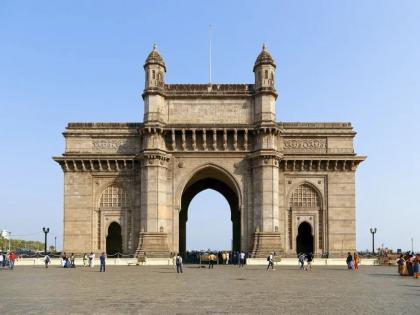Celebrating 65 Years of Maharashtra: Mumbai's Role in Shaping the State's Identity
By Lokmat English Desk | Updated: May 1, 2025 16:17 IST2025-05-01T16:16:12+5:302025-05-01T16:17:23+5:30
Maharashtra commemorates its 65th Foundation Day on May 1, 2025, which marks the state's creation in 1960. The culmination ...

Celebrating 65 Years of Maharashtra: Mumbai's Role in Shaping the State's Identity
Maharashtra commemorates its 65th Foundation Day on May 1, 2025, which marks the state's creation in 1960. The culmination of the Marathi-speaking people's resolute fight to create a state that reflects their linguistic and cultural identity is celebrated on this day. Mumbai, a city whose inclusion in Maharashtra was both a strategic need and a symbol, was at the centre of this effort. Mumbai's fate was closely linked toMaharashtra's path to statehood. Mumbai, the erstwhile capital of Bombay State, was a linguistic and cultural melting pot.
Mumbai & Samyukt Maharashtra Movement
According to archive records, the Samyukta Maharashtra Samiti, which was established in 1956, fervently supported the creation of a distinct Marathi-speaking state with Mumbai as its capital. Gujarati-speaking people and industrialists who wanted Mumbai to be a part of Gujarat or a separate state were among the main opponents of the initiative. When former Prime Minister Jawaharlal Nehru suggested making Mumbai a union territory in January 1956, the conflict grew more intense. Numerous protests were triggered by this decision, and 107 protestors were killed as a result of police violence. The sacrifices made during this time demonstrated the Marathi-speaking population's steadfast desire for Mumbai to become a part of Maharashtra.
The Making of Maharashtra: A Historical Overview Of Key Milestones
1947: India attains independence; the Bombay Presidency includes areas that are now part of Maharashtra and Gujarat.
1956: The States Reorganisation Act creates the Bombay State, incorporating various linguistic communities.
1956: The Samyukta Maharashtra Samiti is formed, demanding a separate Marathi-speaking state with Mumbai as its capital.
1956: Widespread protests occur against the proposal to designate Mumbai as a union territory; 107 protestors lose their lives.
1960: The Bombay Reorganisation Act is enacted, leading to the creation of the states of Maharashtra and Gujarat on 1 May.
1960: Mumbai is officially declared the capital of the newly formed state of Maharashtra.
All around the state, Maharashtra Day is celebrated with great enthusiasm. Given Mumbai's pivotal position in the history of the state, the festivities there are especially lively. At Shivaji Park in Dadar, the day starts with a spectacular parade that is attended by the governor, state representatives, and other civic organisations. Cultural events that highlight the region's rich past include traditional dances like Lavani and Lezim. Businesses, schools, and government buildings stay closed so that people can take part in different activities. The state also takes advantage of this time to commemorate those who have significantly impacted society and to start new initiatives.
Mumbai is a monument to the tenacity and solidarity of its citizens as Maharashtra celebrates its 65th Foundation Day. The decision to include the city in the state was not only a political one; rather, it was a manifestation of the resolve of all those who wanted to see Maharashtra embrace its linguistic and cultural heritage. Mumbai, which embodies the passion and ambitions of Maharashtra, is still a shining example of progress today.
Open in app